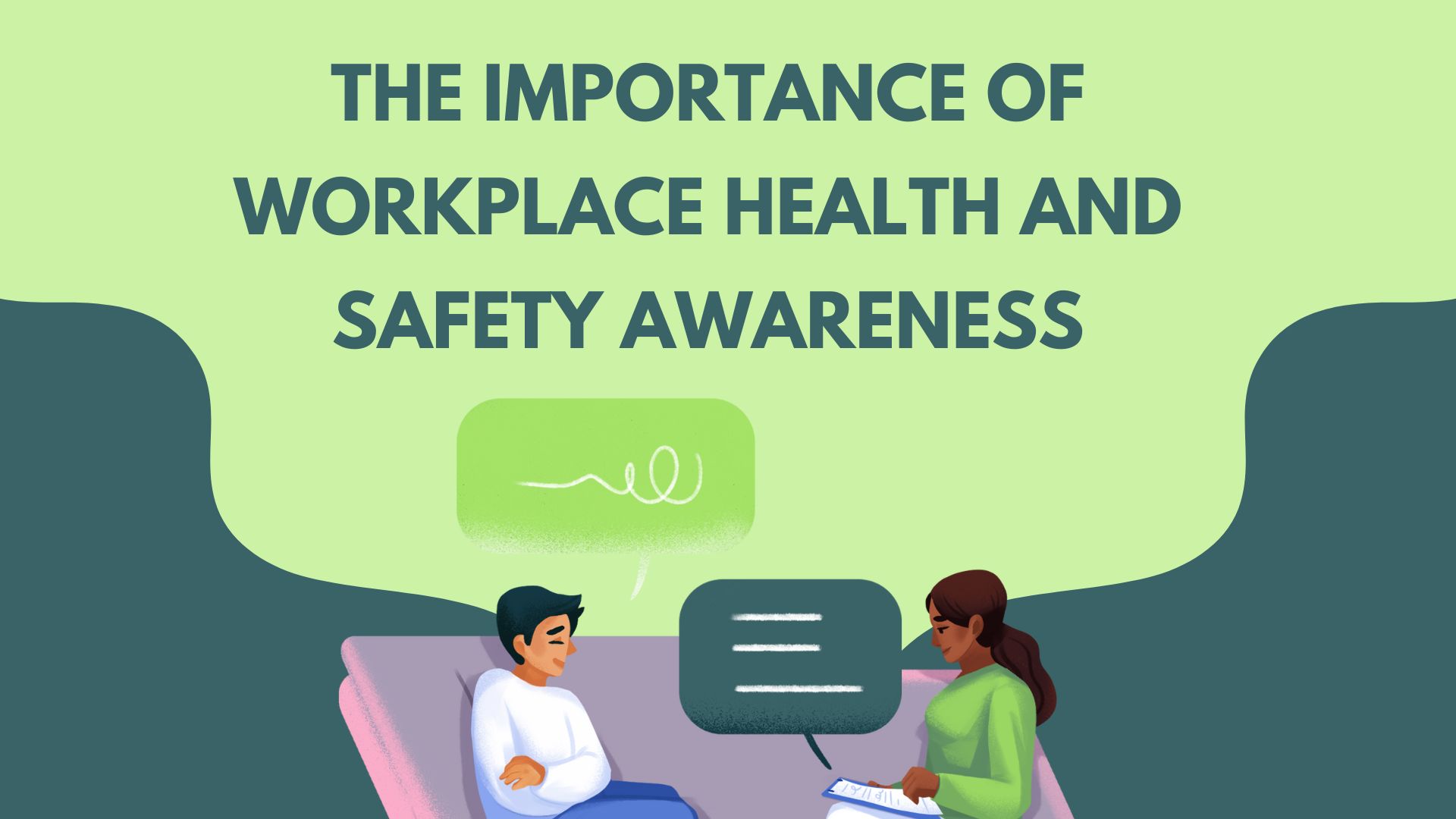Revolutionary smartphones and tablets have forever changed the game of work, giving us immediate access. Now, staff requires convenience and flexibility while using multiple systems, such as HRMS.
Mobile accessibility in HRMS caters to employees’ needs on-the-go. This allows them to efficiently access payslips, leave balances, and performance reviews.
In addition, mobile accessibility in HRMS boosts HR operations. Mobile apps aid HR departments in managing data, recruitment, and training programs. This leads to greater efficiency and productivity for employees and HR alike.
The idea of mobile accessibility in HRMS is rooted in the rising demand for remote work and flexible policies. Companies saw the need for employees to get to their HR information from afar or outside of regular office hours. Thus, mobile accessibility became a priority for many firms seeking to better employee experience and boost overall productivity.
Table of Contents
Benefits of Mobile Accessibility in HRMS
To increase employee engagement, improve efficiency and productivity, and ensure accessibility for remote workers, explore the benefits of mobile accessibility in HRMS. This section highlights the advantages of incorporating mobile technology into your HRMS system, allowing employees to conveniently access and utilize HR services anytime, anywhere. Discover how mobile accessibility can revolutionize your HR processes and enhance overall organizational performance.
Increased Employee Engagement
Employee engagement is a must for any organization’s success. It influences productivity, morale, and satisfaction. Mobile accessibility in HRMS is key for increased engagement. Mobility lets employees access HRMS from anywhere, giving better experience. Mobile apps make real-time communication and collaboration easy. This creates a sense of belonging.
Furthermore, mobile accessibility provides opportunities not found in traditional systems. The user-friendly interface lets employees interact with HRMS easily, raising engagement and satisfaction.
A company used mobile accessibility and saw amazing changes. Employees had quick access to info and could do tasks from their phones. This led to more productivity and job satisfaction.
To conclude, mobile accessibility increases efficiency and employee engagement. When tech empowers employees, communication improves and a positive work environment is created. Investing in such advancements is great for both employees and organizations.
Improved Efficiency and Productivity
Mobile accessibility in HRMS allows employees to access the system anytime, anywhere. This eliminates delays and bottlenecks due to limited availability. It also enables real-time updates on employee data, reducing the chances of errors from manual data entry.
Communication between employees and HR departments is streamlined by providing mobile access. This ensures quick responses to queries or concerns and enhances efficiency. Mobile accessibility also allows for seamless integration with other tools like calendars, task management apps etc. Employees can stay organized and efficiently manage their workload within the system.
Convenience offered by mobile accessibility boosts engagement with the HRMS system. Employees actively utilize the platform, leading to increased productivity and better utilization of resources. New hires can quickly complete paperwork, access training materials and easily communicate with their respective teams.
Security measures for sensitive employee data are also enhanced. Secure authentication protocols and encrypted communication channels help safeguard confidential information. To make the most out of mobile accessibility, organizations should provide comprehensive training sessions and regular updates based on user feedback.
By leveraging the advantages of mobile accessibility in HRMS, organizations can boost efficiency, productivity and offer a user-friendly experience to their employees.
Accessibility for Remote Workers
Mobile accessibility in HRMS enhances convenience. Remote workers can access platforms, update personal info, and submit leave requests, all from any location.
Features such as screen readers & voice control options makes it easy for those with impairments to navigate the system & complete tasks independently.
Productivity is also increased. Manual paperwork is eliminated & processes streamlined, so employees can focus on core duties & help reach organizational goals.
Notifications & instant communication channels between managers & remote workers further optimize workflow & collaboration.
Gartner Research found that organizations with mobile accessibility in HRMS have higher employee satisfaction & lower turnover rates. This confirms its positive impact on performance.
Challenges of Mobile Accessibility in HRMS
To address the challenges of mobile accessibility in HRMS, explore the compatibility issues with different mobile devices, security concerns, and the need for training and adoption.
Compatibility Issues with Different Mobile Devices
Compatibility challenges with various mobile devices are a common difficulty in the mobile accessibility of HRMS (Human Resource Management Systems). Ensuring that HRMS is compatible with lots of devices is fundamental to giving a great user experience. Smartphones and tablets have made it necessary for HRMS systems to change and meet these different platforms.
Nowadays, people rely heavily on their mobile devices for convenience and accessibility. HRMS then needs to be able to work with a variety of devices such as iPhones, Android phones, iPads, and other tablets. Each device has its own unique operating system, display resolution, screen size, and touch features. Adjusting HRMS to fit these different specs brings a big challenge to developers.
To deal with compatibility difficulties, developers must think about the wide range of mobile devices existing in the market. They must ensure the HRMS interface remains consistent and functional across varied sizes and resolutions. This needs thorough testing and optimization to ensure optimal performance on every device.
Furthermore, another part contributing to compatibility problems is the ever-changing mobile technology. With each new device or software update, HRMS needs to adapt. Compatibility worries happen not only at the start of development but also throughout the life of an HRMS system.
An example showing this problem is when an organization used a cutting-edge HRMS system created for web-based platforms. But, when they decided to add mobile accessibility, they faced a lot of compatibility issues. The system that worked well on desktops did not provide a great experience on multiple mobile devices due to differences in screen sizes and operating systems.
Fixing compatibility problems with different mobile devices requires continuous dedication from developers. They must keep up with the latest trends in mobile technology and spend time and resources into testing and optimization efforts. Only by focusing on compatibility can HRMS systems give a smooth and user-friendly experience across all devices.
Security Concerns
Mobile access to HRMS comes with security worries. These include possible data breaches, unauthorized access, and exploitation by malicious actors.
- Data Breaches: A major issue is the risk of data breaches. Mobile HRMS platforms must have strong encryption protocols to protect employee information from being accessed or modified by unapproved people.
- Unauthorized Access: Another worry is unauthorized access to HRMS systems through mobile devices. Two-factor authentication can help reduce this risk.
- Malware and Phishing Attacks: Mobile devices are vulnerable to malware and phishing attacks, which can compromise the security of HRMS systems. Regular scanning for malware and training employees about phishing attacks can lessen the likelihood of such incidents.
- Device Security: The security of mobile devices themselves is important for making sure the integrity of HRMS systems. Using measures like remote wipe functionality, automatic lockouts, and encrypted storage can help defend against physical device theft or loss.
- Data Privacy: Keeping data privacy is a major concern in mobile HRMS access. Organisations should implement strict policies regarding the collection, storage, and use of employee data to guarantee compliance with privacy laws and regulations.
These fears can’t be ignored as they directly influence the privacy, integrity, and availability of HRMS systems accessed through mobile devices.
Although tackling these concerns can be tricky, there are practical steps organisations can take to increase mobile HRMS security. Initially, regular updating of mobile applications and operating systems ensures known vulnerabilities are patched quickly. Second, regular security audits help discover any weaknesses or areas that need improvement within the HRMS framework.
Secure coding practices during development are also important for enhancing mobile HRMS security. This includes using libraries and frameworks with built-in security measures, secure code reviews, and following industry best practices.
Moreover, employee education and awareness programs are essential in reducing security risks. Training employees on safe mobile device usage, recognizing phishing attempts, and creating strong passwords can significantly decrease the chance of successful attacks.
By acting in advance to address these security concerns and implementing comprehensive security measures that meet industry standards, organisations can ensure the safety of their HRMS systems accessed through mobile devices. It is vital to put mobile HRMS security first to guard sensitive employee information and maintain the overall integrity of HR operations.
Training and Adoption
Training & adoption are crucial for successful mobile accessibility in HRMS. Educating employees & encouraging use of the new system is essential. Conduct interactive workshops & demos to teach employees how to navigate the app. Provide user manuals & online resources with step-by-step instructions & troubleshooting tips. Keep users informed through regular emails & push notifications. Gamification can boost engagement & make learning a fun activity.
Get feedback from users to refine the HRMS mobile app. Hold hands-on workshops to build user confidence & competence. Additionally, a support team dedicated to resolving technical issues & addressing user concerns should be established. Leverage peer-to-peer learning & mentorship programs to guide users. Lastly, recognize & reward early adopters to incentivize others to embrace the tech. All this will ensure smooth training & adoption while enhancing employee efficiency & satisfaction with mobile accessibility.
Best Practices for Implementing Mobile Accessibility in HRMS
To enhance mobile accessibility in HRMS, implement best practices that address key areas. Design a user-friendly mobile interface, ensure compatibility with different platforms, enhance mobile security measures, and provide adequate training and support. Each sub-section tackles a specific solution for optimizing mobile accessibility in HRMS, enabling efficient and inclusive use on mobile devices.
Designing a User-Friendly Mobile Interface
Designing a user-friendly mobile interface is vital for HRMS accessibility. Make it seamless and intuitive, to improve the user experience and promote inclusivity. Here’s what to consider:
- Simplify navigation. Use clear icons, intuitive gestures and well-organized menus. This makes it easy for users to explore features without confusion or frustration.
- Optimize content display. Adapt content layout to make it more readable and accessible on mobile devices. Use responsive design techniques for text and images.
- Incorporate accessibility features. Include voice commands, screen magnifiers, color contrast enhancements and alternative text for images. This helps disabled users to interact with the HRMS.
Keep testing and gathering feedback from diverse perspectives. Refine the mobile interface based on user insights. This will increase usability and optimize accessibility.
Don’t miss out on these essential practices. Take action now and create an engaging and accessible interface. Embrace inclusive design and revolutionize your HRMS experience!
Ensuring Compatibility with Different Mobile Platforms
Developers must use responsive design techniques for compatibility. This means creating flexible layouts which adjust according to the device’s resolution and screen size. HRMS can offer a similar experience, no matter the platform used.
Cross-platform development frameworks can also help. Popular ones like React Native and Xamarin let developers write code only once, and deploy it across different platforms.
Extra features particular to each platform can improve compatibility further. For instance, using native abilities of Android or iOS can give users a smoother experience. Balance between these features and consistency across platforms is important.
Testing on different devices and OSs is a must for making sure of compatibility. Automation tools such as Appium can make this simpler. They let developers run tests on several devices at once.
Enhancing Mobile Security Measures
Mobile reliance is on the rise, making it critical for HRMS systems to have reliable security measures. Here are some top tips for mobile security in HRMS:
- Biometrics or two-factor authentication should be implemented to stop unauthorized access.
- Data must be encrypted both when in use and when at rest, to protect employee info from being stolen.
- HRMS software should be updated and patched frequently, to close any potential security gaps.
- Access controls and permissions must be tight, to limit user privileges and minimize data breaches.
- Employees should be taught about best security practices, such as using secure passwords and avoiding public Wi-Fi.
Furthermore, security checks and penetration testing should be done regularly to detect and eliminate any weak points in the HRMS system’s mobile security.
Pro Tip: Set up a strong password policy for extra security on mobile devices connected to your HRMS system.
Providing Adequate Training and Support
- Set up a thorough training program. Create a structured training program that covers all components of mobile accessibility in HRMS. This should include both theoretical knowledge and actual, hands-on experience.
- Organize regular training classes. Schedule frequent training sessions to keep employees informed on the newest advancements in mobile accessibility. These classes can be conducted in person or through online webinars.
- Give prolonged support. Provide ongoing help to employees as they work their way through the complexities of mobile accessibility in HRMS. Establish a help desk where employees can reach out for assistance anytime.
- Promote feedback and improvement. Develop a culture that values feedback and actively encourages improvement. Employees should feel comfortable offering ideas for enhancing the mobile accessibility features in HRMS, creating an inclusive work environment.
- Remember individual needs. It is important to remember that every individual may have different learning needs and requirements. Address these individual details, such as providing alternative formats for training materials and personalized attention during training sessions. This ensures that all individuals get the support they need.
Success Stories: Companies Embracing Mobile Accessibility in HRMS
Companies are getting huge success from embracing mobile accessibility in HRMS. It is changing the way employees handle their HR-related tasks with their smartphones or tablets. This modern technology allows employees to explore HRMS features from anywhere, anytime.
The advantages of mobile accessibility in HRMS are incredible. Employees can easily view their leave balances, submit time-off requests and look at their pay stubs – all at their fingertips. This integration of HRMS with mobile devices makes manual paperwork unnecessary and cuts down on admin duties.
Moreover, companies have observed a big rise in employee engagement & satisfaction after implementing mobile accessibility in HRMS. Employees appreciate the flexibility they get, not having to stay at their desk to use HR services. This access offers workers a sense of independence and power, improving their work experience.
In addition, companies have reported better communication efficiency with mobile accessibility in HRMS. It encourages quick sharing of company news, policies and announcements. This fast communication helps keep relations between management and employees transparent.
Furthermore, mobile accessibility in HRMS tightens data security. Companies can set up multi-factor authentication methods to make sure employee data is secure & protected from unauthorized access.
Pro Tip: To take the most out of mobile accessibility in HRMS, companies need to constantly get feedback from users and make enhancements to enhance the user experience.
Conclusion
Mobile access to HRMS is now a must-have for organizations. With more mobile devices being used, employees want easy access to HRMS on their phones and tablets. It’s not just about convenience; they need instant engagement and real-time info.
Mobile access has changed how employees connect with HR systems. It gives them the power to do HR tasks like view payslips, request leave, get training materials, and update their info from anywhere. This boosts employee satisfaction and productivity.
And it keeps remote workers and field staff connected, even if they don’t have a desktop. So, everyone has access to HRMS features. Mobile access helps HR streamline processes, cut back on paperwork, and boost efficiency.
Pro Tip: When implementing mobile access to HRMS, make sure it looks good on all devices and operating systems. Keep updating it to get user feedback and improve user experience.
FAQs
Ques 1. What is mobile accessibility in HRMS?
Ans 1. Mobile accessibility in HRMS refers to the ability of employees and HR personnel to access and use human resource management system (HRMS) software on their mobile devices, such as smartphones or tablets. It allows for seamless access to HRMS functionalities and data while on the go.
Ques 2. Why is mobile accessibility important in HRMS?
Ans 2. Mobile accessibility in HRMS is important because it enables employees and HR personnel to perform various HR tasks and access critical information anytime and anywhere. It increases efficiency, productivity, and responsiveness in HR operations by eliminating the need for being tied to a desktop computer.
Ques 3. What features should I look for in a mobile-accessible HRMS?
Ans 3. When considering mobile-accessible HRMS solutions, look for features such as responsive design for optimized viewing on different screen sizes, intuitive user interface for easy navigation, secure mobile data access, real-time notifications, mobile timesheet management, mobile leave management, and mobile employee self-service functionality.
Ques 4. Are mobile-accessible HRMS systems secure?
Ans 4. Yes, reputable HRMS vendors like SME Payroll ensure that their mobile-accessible systems are secure. They use encryption protocols, secure data transmission, and implement robust security measures to protect sensitive HR data. It’s important to choose a trusted HRMS provider and regularly update the system to maintain security.






















Leave feedback about this